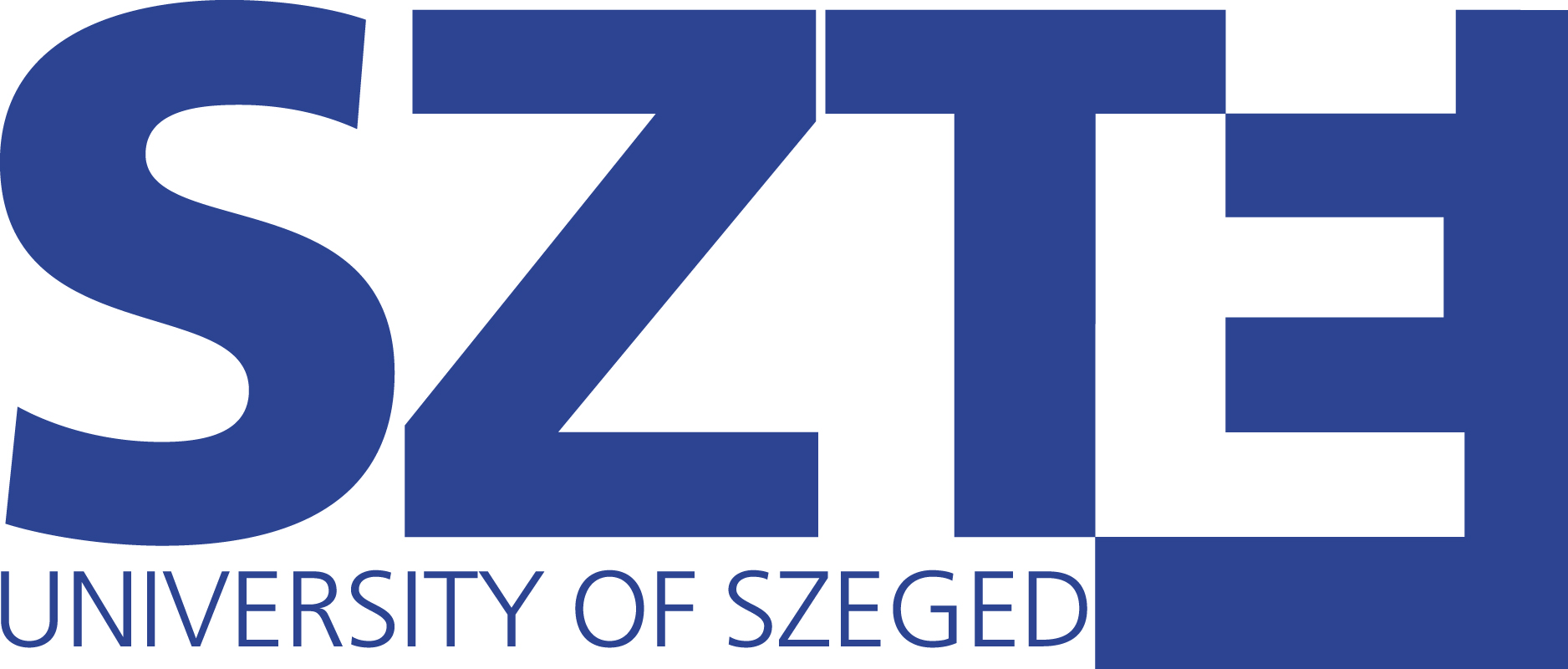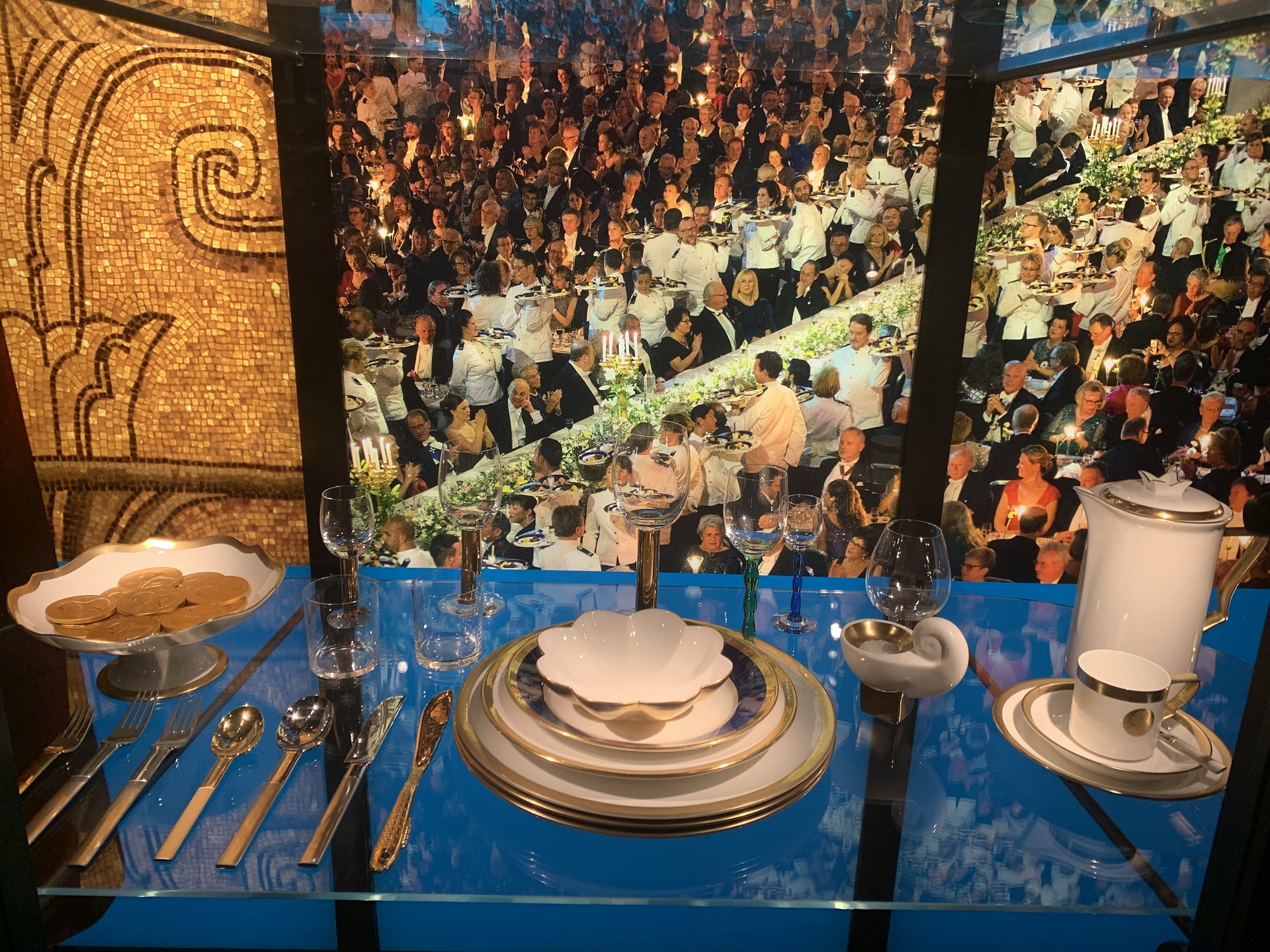
What kind of jewel is pseudouridine? What tableware is used for the banquet after the Nobel Prize ceremony? What items did this year's laureates donate to the Nobel Prize Museum? We will show the donations of the 2023 Nobel laureates – including Katalin Karikó and Ferenc Krausz, who have strong ties to the University of Szeged.
The report of our correspondents sent to the Nobel Week in Stockholm – Ilona Újszászi and István Sahin-Tóth:
Autograph hunters were lingering at the entrance of the Nobel Prize Museum. The group were eagerly waiting with photos in theirs folders to be signed. The Nobel Prize winners were arriving. It is a tradition during the Nobel Week in Stockholm that the newest Nobel laureates visit the museum, focusing on the world's most renowned scientific award.
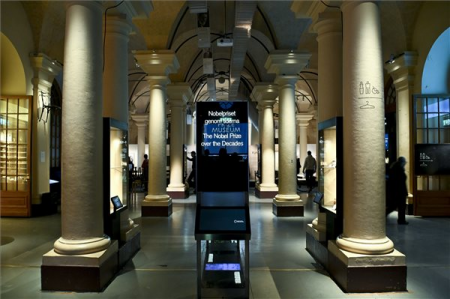
The aim of the museum opened for the 100th anniversary of the Nobel Prize is to be 'a forward-looking and inspiring tribute to Nobel laureates and their achievements, as well as to the Nobel Prize and Alfred Nobel.' Photo by Szilárd Koszticsák /MTI
"What is neither a plant nor an animal but lives in symbiosis with both?" The exhibition at the Nobel Prize Museum in Stockholm provides the answer to this riddle. The exhibition titled 'Fungi – In Art and Science' intertwines the attractions of the Nobel Prize Museum just like the extensive family of fungus does in reality, with its delicate thread-like network.
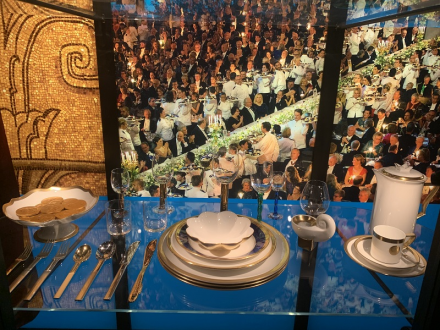
The tables are being set with a magnificent tableware at the banquet following the Nobel Prize Award Ceremony. Photo by Szilárd Koszticsák /MTI
The Nobel tableware is just as much a spectacle associated with the award as the peculiar medal.
- 'I don't wear jewelry,' - stated Katalin Karikó in several interviews. However, for the first time, she couldn't resist the inventive medal: the pseudouridine, depicting the most common modification in the RNA of cells. Karikó Katalin wore this jewelry at her Nobel Prize presentation.
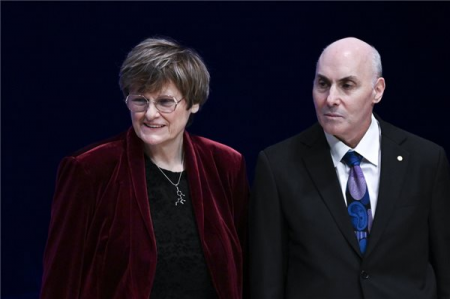
What is unusual about Katalin Karikó's outfit? The fact that she is wearing jewellery. The Nobel Prize Museum in Stockholm came up with the idea of making a pendant based on the formula of pseudouridine, which will be available for purchase by any visitor to the museum's gift shop. Photo by Szilárd Koszticsák /MTI
In honor of the first Hungarian female Nobel laureate, the Nobel Creations 2023 exhibition was organized, showcasing garment creations by students from the Beckmans College of Design.
Significantly involved in the establishment of ELI-ALPS in Szeged, Ferenc Krausz, one of the 2023 Nobel laureates in physics, has donated a photo to the Nobel Prize Museum. The photograph captures a central detail of the equipment he used for his research. The exceptional apparatus with its magnificence will soon enrich the Nobel Prize Museum too.
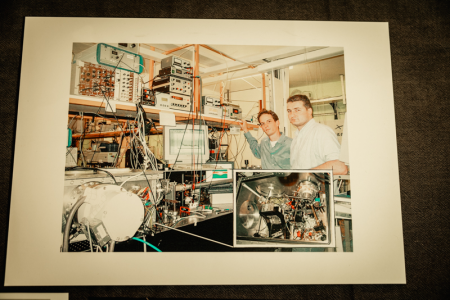
Ferenc Krausz and his research team's apparatus, as seen in the photo, will soon be avilable in its true form at the Nobel Prize Museum in Stockholm. Photo by István Sahin-Tóth.
"The pipette is my everyday tool in the laboratory. A biochemist watches the pipette, not the microscope, while working," said Katalin Karikó when responding to the question of how to envision her at work. "That's why I asked to be photographed with the pipette during the campaign featuring female scientists, supported by L'Oréal. These large-sized photographs have also been displayed in the waiting areas of numerous international airports across Europe, promoting women scientists and research.
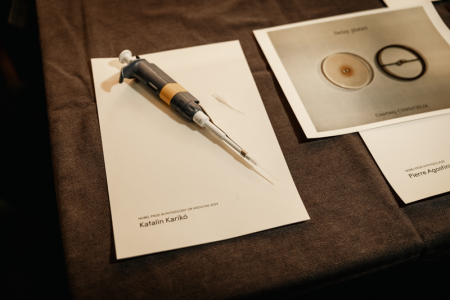
Pipettes come in many different forms. Katalin Karikó donated one of the pipettes – she used for her laboratory work – to the Nobel Prize Museum in Stockholm. Photo by István Sahin-Tóth.
The operation of pipettes is simple: one end is immersed in the liquid being examined, and using the button at the other end, suction force is applied to draw the liquid into the pipette. On the exterior of the pipette, there are always indicator marks that help determine the quantity of liquid to be aspirated.
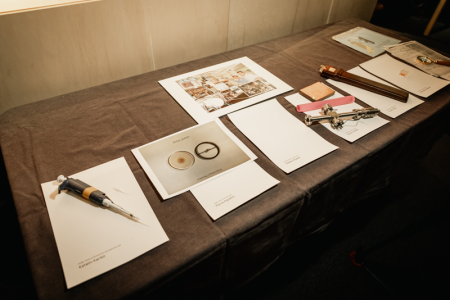
The Nobel Prize Museum preserves Albert Einstein's manuscript from 1922 as a unique item – we learned from Ulf Larsson. The museum's chief curator stood beside the latest donations from Nobel laureates. Drawing the attention of journalists interested in curiosities, he recommended his lecture on the manuscript of scientific-historical significance, which is available online.
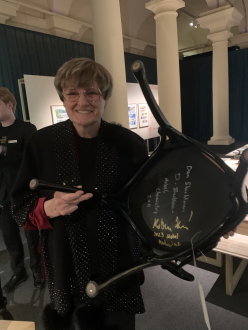
-The first thing a Hungarian arriving in America loses is the accent mark attached to their name," said Katalin Karikó. Therefore, as a researcher arriving in the 'promised land,' she always emphasizes writing her last name with a vowel 'ó’.
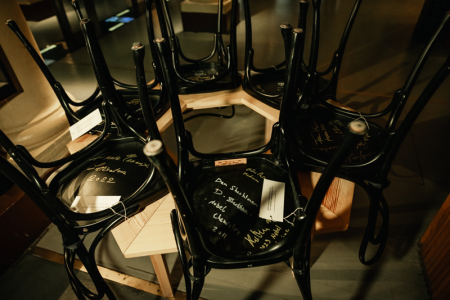
It is worth and interesting to turn the chairs of the café at the Stockholm Nobel Prize Museum upside down and, based on the signatures, figure out which Nobel laureate's signature makes each chair a unique piece of furniture. Photo by István Sahin-Tóth
Using the expression of the great emigrant, Mária Sándor’s poem, titled 'Funeral Oration': '... and the accent falls from your name.
We found Katalin Karikó's signature – it is on the back of the chair placed upside down on the table in front of the café at the Nobel Prize Museum. The research professor of the University of Szeged also followed the tradition of the Nobel Prize Museum by providing her autograph, which a piece of furniture preserves for posterity.
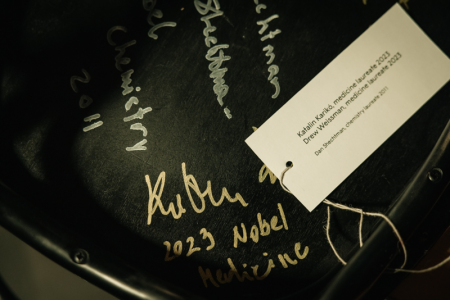
The visitors will be delighted when, looking under the chair in the Nobel Prize Museum café, they find the valuable autograph. Photo by István Sahin-Tóth
We tried it. We sat down, then checked the inscriptions under the selected chairs. We just came across the signature of Gérard Mourou. The Nobel laureate professor, closely connected to the Szeged ELI ALPS laser research centre, also indulged in the Nobel Prize Museum tradition by writing his name on a chair.
Not only the museum staff collect the signatures of Nobel laureates on the famous chairs, but also resourceful autograph hunters. They were eagerly waiting at the main entrance. We saw one of them receiving an autograph from Drew Weissman. Fort he reason, as we mentioned in the call for the popular science campaign 'Nobel Weeks at the University of Szeged': 'Science is fancy!
Ilona Újszászi
Photos: István Sahin-Tóth, K. Zs.
